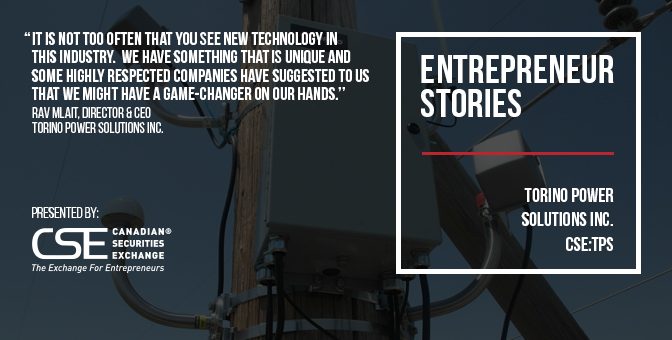In late July, Peter Murray of Kiyoi Communications sat down with Tom Rossiter, Chief Executive Officer of CSE-listed RESAAS Services Inc. (CSE:RSS) to discuss his perspective on opportunities in the real estate sector and RESAAS’s unique platform. Below is the transcript of their discussion.
Peter Murray (PM) RESAAS offers unique services to the residential real estate industry, a massive market if there ever was one. Can you begin by walking us through what the company does at a high level, and given all the pivots that seem to take place at technology companies, has your mission changed along the way?
Tom Rossiter (TR) Our mission hasn’t changed along the way, it has evolved. If we rewind to the beginning of RESAAS (Real Estate Software as a Service), we set out to create an online platform that aids the existing practices of the real estate industry. We all know that real estate agents are social professionals – maybe the most social group of professionals that exist. When you are together with them in real life it is amazing to see the knowledge sharing, the education, the tips and tricks, and the deals that get done.
We thought that should be supplemented digitally so the value of a professional circle could transcend a local market and put an agent or organization on the map not just locally but nationally, and maybe even overseas. You can think of RESAAS as an online destination for real estate professionals to act as they do in real life.
Eventually, the networking effect kicked in, which means the bigger the network, the greater the value to those in it. Word got out about all the great content, and data, and deals, and leads, and listings that were happening inside RESAAS amongst the agents using it. Leading organizations with extensive footprints in terms of agent count and office locations began to catch wind of what was going on and thought, “Wow, we have this large physical presence. What would happen if we embraced this RESAAS model to be our digital complement?”
A big part of our business now is working with these larger brands and organizations and supplying our technology and services to their networks. We provide a white-labeled platform so they can give their agents a way to interact digitally, and ultimately do more business.
(PM) 2. What tools are you providing and what makes them unique?
(TR) The tools are really just an extension of what the agents are already doing. Every agent either has listings or wants to find listings for buyers, so we provide an easy system for listing sharing amongst agents.
Buyer needs is a particularly important aspect. In hot markets, there is less inventory and more demand. Where listings are scarce we provide a buyer needs experience so that agents can signal they have a buyer and detail that buyer’s requirements. While RESAAS works very well across buyer’s markets, seller’s markets and neutral markets, we’ve become particularly popular in seller’s markets, where there is that supply issue. What we have been able to do is to create a new way for the industry at large to organize and visualize listings.
The way the industry works is that it can take up to five days between the time an agent signs a listing agreement and the time a property is listed on the MLS with pictures and other information. During that period, agents might communicate the listing to others and transactions can thus occur pre-market. And those that do are outside of the MLS.
For local organizations charged with governing their respective local real estate markets, this is a big problem because they need to know everything about the market so their database, their analytics and their comparables are accurate.
Last year in the US about 22% of properties that sold never got to the point of having an MLS listing. And in hot markets, that can reach 40%. To bring that back to RESAAS, we have created a way to capture listing data pre-market that is structured, organized, clear and compliant. Agents love it because it levels the playing field. But even more important is that our clients, the local real estate associations and boards, can finally visualize and track activity in its pre-MLS phase.
Because of varying regulations and bylaws in individual markets, RESAAS sometimes has data for days, or even weeks, before any other destination online has it. Ours is the first platform of its kind and has been termed extremely disruptive. We are marching out across the US and activating different markets every week.
(PM) 3. Would you say that locating senior management and most of the technology team in Canada has been the right decision for RESAAS?
(TR) We are fortunate to be based in Vancouver, which has become what I consider to be the Silicon Valley of the north. It is a thriving destination for technology companies to base an office in or establish their headquarters. I have been here for 10 years and watched the city transform from a technology reception standpoint such that there is now an understanding of how a company like ours needs to be supported, financed and communicated.
There is an amazing community in Vancouver amongst technology companies. Even though companies might compete with each other, there is collaboration and innovation. And given the variety of companies that exists here – private, public, start-up, emerging, well-established, large and small – there are so many industries serviced by them that the thought-leadership and mentorship opportunities are tremendous.
Importantly, Vancouver has a buoyant investor scene that supports and understands technology companies. As a public technology company on the CSE, we could not be more grateful to be in such a dynamic environment.
(PM) 4. Take us inside the RESAAS strategy. How did you develop your game plan, and what are the keys to executing effectively?
(TR) RESAAS started as a freemium platform. We opened the gates to a network we had built and did so without putting up a paywall. We wanted to minimize the barriers for busy professionals to use and believe in our platform.
The strategy all along was to build a critical mass of users and analyze what they did – what they talked about, what they wanted and how they used what we had created. We didn’t put a timeline on it. Our approach was to launch the platform and once we felt we had enough information, analytics and patterns to understand the behavior, then we’d be informed enough to build solutions that we could sell.
As a result, everything we are doing now and everything we have created is based on industry activity and demand.
Really, it is consistent execution of the game plan. Run something for free, analyze the patterns and data, build solutions that represent what people are crying out for, then monetize it at scale to an industry in need. We are now in the last phase of that four-pronged strategy. By spending time up front to understand exactly what different facets of the industry require, when we build a solution and take it to market the reception is fantastic from the get-go. We are not finding our way or having to pivot on the fly because we have gone to market with a polished solution we know is in high demand.
(PM) 5. Some technology companies become profitable early on but others achieve very high valuations with hardly any revenue at all. What is your take on this, and where is RESAAS on the earnings versus valuation continuum?
(TR) We view RESAAS as similar to a Silicon Valley company mentality. By that I mean that the process is to assemble a team and raise capital, build a product and run it for free, and then based on the data you subsequently monetize it. We have chosen to do that in Canada, we have chosen to use the CSE as our vehicle to raise our capital, and we have spent time, capital and resources to build something that has longevity and scalability. And the product is in high demand now that we are selling it.
During the early days, people got excited because when you assemble a brilliant team trying to tackle a problem in an industry as large as real estate, it is natural for people to dream big. During the development/pre-revenue phase, people get excited and imagined the blue sky. But when you turn on the revenue, that aspect of the business is beginning from a cold start.
What can happen is that people start to look at you from a current revenue standpoint and forget about the blue sky. It happens to a lot of companies in Silicon Valley, too. We are in that phase where we must push revenue growth month-after-month, quarter-after-quarter, geared around a recurring revenue model. We know where we are going with this, we know how big the market is, we know how many customer types there are, and we have created a model that enables us to monetize a single agent multiple times. That, combined with the intrinsic value of the data we are gathering, puts us in a strong position for robust valuation in the near term.
(PM) 6. Tell us about the technology and user base you have built to date. What comes next? How does it grow in new ways and monetize from here?
(TR) RESAAS attracted almost half a million agents in the first 24 months of operations. From that we learned, through analytics and behavioral analysis, what we felt different groups in the industry needed and would buy, and we built those solutions.
We started taking our solutions to market in 2016 and are already working with some of the biggest brands in the space. The top two global real estate franchises are RESAAS customers and run on our technology.
In 2017, we judged that the role of the free network for real estate agents had played its part. As I’ve already mentioned, the years we spent gathering data and analyzing behavior formed the basis for the products we subsequently created.
We have thus decided to add a paywall to RESAAS, which means the free version is no longer available. Going forward, all users will be paid for either by the brokerage they belong to, their local association, or by themselves. It will mean a reduction in the number of users we have but the revenue per user will increase dramatically. This is a tactical part of our strategy that we began executing this year and we are very happy with the early conversion numbers.
(PM) 7. You have raised over $30 million since debuting on the CSE in February 2011. What types of investors back a company like RESAAS and what can you tell us about your relationship with shareholders?
(TR) RESAAS is fortunate to have an enlightened, supportive and loyal group of shareholders who have invested from our IPO in 2011 all the way up to our most recent financing. That is a tremendous asset for our company and something we are very grateful for. It has allowed us the time, bandwidth and resources to build the company we envisioned, to take the time to professionally execute on our vision, and to take our strategic plan to market in exactly the way we wanted.
The result is that we have come to market with a product and set of services the industry has never seen before and clients are calling out for. The entire process has been made a lot easier by being listed on an exchange like the CSE. It provided a tremendous amount of assets, tools, resources and connections outside the network we have within our own company. The CSE has proven to be a fantastic capital markets partner and facilitated the timeframe we needed to build a world class technology company here in Vancouver.
(PM) 8. Looking at life in the public markets, what are some of the positives, and what has been your biggest challenge?
(TR) RESAAS has found the public markets, on balance, to be extremely advantageous for our company’s growth. They provided a vehicle to raise a tremendous amount of capital. They provided us an avenue through which to meet influential, informed and intelligent investors across Canada, and they furnished our company with enough capital to execute our vision. We have been able to build a better business because of this.
Going public pre-product is somewhat unconventional in North America and definitely made us refine our communication style. We communicate corporate updates clearly and more regularly than is perhaps the norm, to give investors insight into the direction the company is heading.
Typically, a company would be private and build something and would go to market. They would have all the right components in terms of revenue growth and then they would IPO. RESAAS chose to IPO early and use that time to build a product from nothing, but having spent the hours and airmiles to understand industry needs.
We were fortunate enough to have a shareholder base that believed in our vision and supported our direction. And here we are six years after our IPO in a position where all of our early shareholders are still supporting the company. They are extremely happy with what we’ve created, and they are over the moon with the opportunity before us. We could not be happier or more fortunate to have such a supportive group of investors behind the company.
(PM) 9. What would you tell the next generation of growth companies about going public?
(TR) As an emerging tech company, a listing on the public markets provides a proven platform to raise capital, whilst retaining more control than perhaps the alternative of remaining private would allow. In addition to the financial benefits that a public listing can bring there is greater awareness, credibility, investor confidence and use as a sales tool. I have to say that the public markets have been fantastic.
(PM) 10. Finally, can you speak about the achievements investors can look forward to in the coming 12 months. Why should people be excited about RESAAS?
(TR) Well, I would say that 2017 is RESAAS’s breakout year. It’s the year we finally recognize the effort our company has put in over the last six years to monetize our solutions. We already work with national brokerages and franchises. We already work with major and progressive real estate associations and boards across North America. And most excitingly for this year, we launch our newest solution aimed at the brokerage network, targeting over 120,000 independent brokerage firms across North America with a solution we spent more than a year building based solely on input from the people who run those brokerages.
This is the year that RESAAS becomes “SAAS-ified” and we could not be more excited about the direction the company is heading, our growth potential, and ensuring that we remain number one in this industry from a B-to-B technology standpoint.













